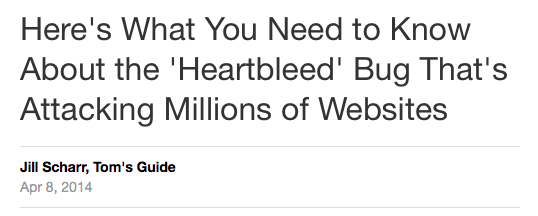Brands
These 3 Headline Trends Will Make You Forget All About ‘What Happens Next’
News organizations have always used sensational headlines and yellow journalism to sell papers, so it’s no surprise digital publishers now take a similar approaches. But instead of farming out newsboys to yell, “Extra, extra,” some news sites have relied on clickbait titles to increase readership. And if Upworthy’s viral success is any indication, creating “curiosity gap” headlines to tease readers has become a fad many publishers are hoping to capitalize on.
But guess what? Eli Pariser, Upworthy co-founder, recently told attendees at the AdAge Digital Conference that even he thinks it’s time to try something new. “The company built a system to figure out what works, and for a while, those viral-grabby headlines worked well,” he said. “Now, the same system is leading in a new direction.”
But the problem is: If you don’t follow through with quality content, or your headline isn’t appropriate for your story, readers will end up feeling duped and may never come back.
Instead of trying to mimic Upworthy’s over-the-top style like everyone else, try experimenting with these headline alternatives.
1. The numbered-list-with-a-tease headline
Or, as Ranky.com calls it, the “sexy hint” headline. It takes the top-10 list format and adds a teaser to direct the reader to a particular detail. ViralNova uses this approach often; check out the following example, and tell us you’re not dying to see #11:

2. The here-you-go headline
On CopyBlogger, Jerod Morris wrote, “Use your headline to tell people exactly what problem you’re going to solve or exactly what solution you’re going to provide … and the clicks will stream in quickly and clearly.” Using the word “here” in the headline tells readers exactly what you’ll be giving them, like in this example:

3. The anti-Upworthy headline
Straightforward headlines that summarize the topic in as few words as possible can work with very compelling or unique topics. Take a scroll down Mashable’s homepage for good examples of this strategy in play:

As you develop your own style, remember headline fads will change over time, but there are a few timeless tips to keep in mind:
- Put yourself in the reader’s seat. Will your article provide useful information, offer a unique perspective, or entertain readers? Your headline should pique reader interest, but shouldn’t make false promises.
- Consider your subject matter. Some headline styles simply don’t work for certain kinds of stories. CNN found this out when they tried an Upworthy-style headline for a breaking news story that fell flat. Serious topics should use straightforward news headlines, whereas a service article might claim to solve a problem or share tips.
- Don’t forget about SEO. It’s still important to include strong keyword phrases in a headline if you want the article to appear in search results. Of course, if your goal is to inspire social sharing, you’re probably less concerned with a loaded headline.
- Use clichéd headlines sparingly. The idea is to stand out from your competitors, so you don’t necessarily want to follow the same headline trends as everyone else. Take into account user-feedback and engagement metrics.
Contently arms brands with the tools and talent to become great content creators. Learn more.
Image by Steven RitzerGet better at your job right now.
Read our monthly newsletter to master content marketing. It’s made for marketers, creators, and everyone in between.




